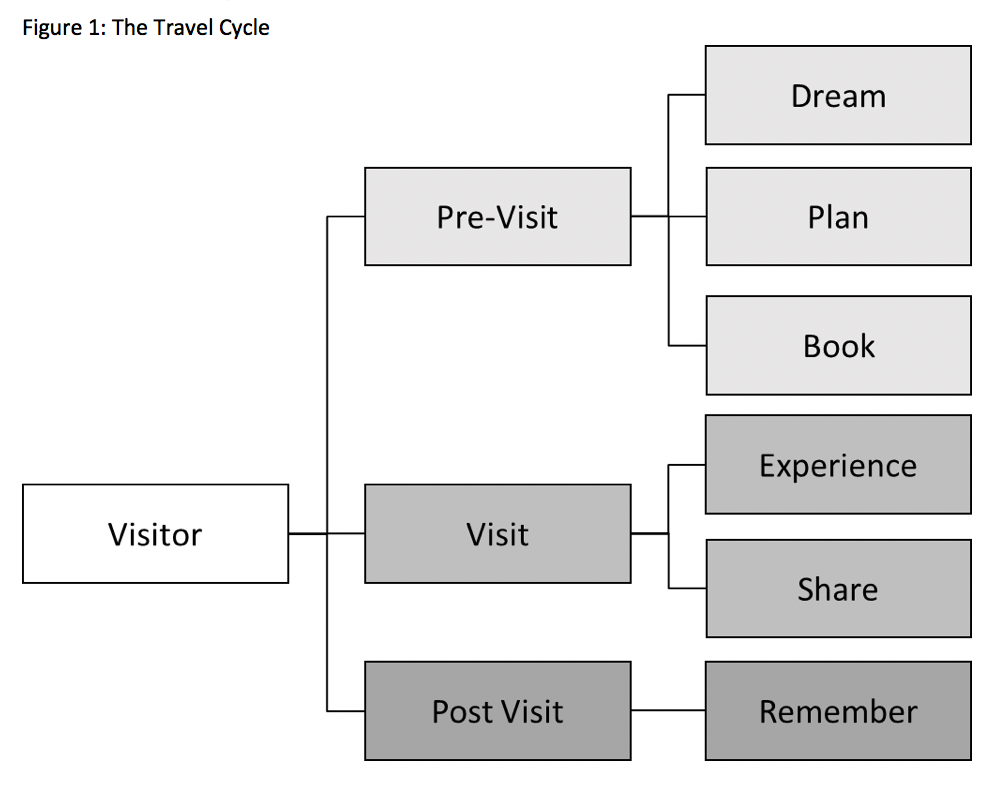The Travel Cycle

World Heritage sites in the European Union are major drawcards for visitors, attracting millions of visitors from around the world every year. World Heritage properties are also integral to national and European identities, and are cherished and frequented by local and domestic visitors.
With new technology, ease and affordability of international travel, visitors to World Heritage sites directly compare the standard of visitor services and amenities on offer to that of other global private and public sector attractions and destinations. Smart phones have become the essential trip companion with 'connected travellers' are the norm rather than the exception.
Visitors use their mobile phones to connect to the internet and social media. Through this connection visitors can engage with friends and relatives and be presented with information in a timely and convenient manner.
Visitors use smart phones at every stage of the travel cycle including navigating around the site and region, booking tours, accommodation and restaurants on site and nearby, locating events, reading reviews and conducting financial transactions and purchases.
A TripAdvisor study in 2015 based on 44,000 global responses found that 42% of travellers use smart phone to research, plan and book a trip. Travellers combine using their smart phone with social media to send photos, share reviews and comment, take and upload video content and update friends about their favourite sites as they travel. According to the 2017 World Economic Forum, predictions were made that by 2020 six billion smart phones will be in global use. That is a growth rate of over 50% in four years.
Managers of World Heritage sites will need to be aware of this reality when considering management and marketing programmes. Mobile phones also provide a significant opportunity to map visitor movement and capture visitation patterns as part of a Destination Monitoring Framework.
The 'World Heritage' brand is globally recognised and powerful, and with this recognition comes high visitor expectations of excellence throughout the travel cycle, matching the brand promise and befitting World Heritage designation.
The 'World Heritage Journeys of the European Union' initiative has objectives that transcend visitation, with a focus on enriching the visitor experience and 'digging deeper' into the World Heritage sites and themes featured in the programme.
Each stage of the travel cycle (Dreaming, Planning, Booking, Experiencing and Sharing) provides an opportunity to influence visitor expectations, aspirations, intentions and to better align with the objectives of the 'Journeys' initiative.
For this reason the case studies and best practice examples featured in this report are not restricted exclusively to World Heritage sites but also consider various global examples, to better reflect visitor expectations of the world traveller. Tourism is a global business and services and amenity should be measured in this context.
Read more in the Pre-Visit Section
**References: **
TripAdvisor (2015) TripAdvisor Study Reveals 42% of Travelers Worldwide Use Smartphones to Plan or Book their Trips, TripAdvisor, available here (01/12/2017).
Kharpal, A. (2017) Smartphone market is worth $355 billion, with 6 billion devices in circulation by 2020: Report, CNBC, available here (14.12.2017).
